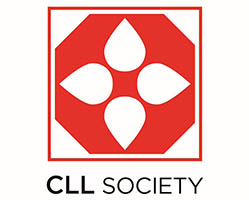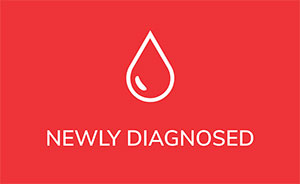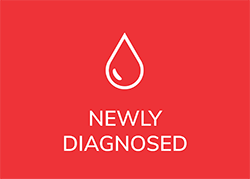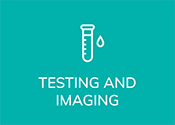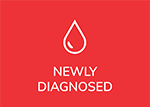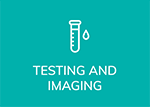
The abnormal white blood cells or “leukemic cells” produced in chronic lymphocytic leukemia (CLL) can reside for years in various parts of the body, slowly and discretely accumulating in bone marrow, blood, or lymph nodes. Taking years to become detectable and unlike other types of cancers which produce solid masses, CLL is virtually invisible to conventional imaging technology commonly used in radiology, such as ultrasound (US), computed tomography (CT) or magnetic resonance imaging (MRI). As a result, imaging has only a small role in the clinical management of CLL, primarily limited to clinical trials and to answer some specific questions.
CLL is initially suspected with a simple blood test, demonstrating abnormally high levels of white blood cells, which are subsequently evaluated under a microscope. Diagnosis is then confirmed with more advanced blood tests, including flow cytometry, antibody testing and cytogenetic testing. Bone marrow biopsy may be used to determine prognosis and/or to confirm diagnosis. Bone marrow biopsies, usually taken from the pelvic bone (iliac crest), are commonly performed in the office by the oncologist, occasionally by a radiologist utilizing CT for guidance. Prior to the start of treatment, CT of the chest, abdomen and pelvis can be obtained for evaluating for possible lymph nodes, spleen or liver enlargement those is not generally recommended. Information provided by the culmination of various laboratory and imaging tests will help determine prognosis and guide treatment.
Radiologic imaging becomes even more rare after this initial diagnosis and staging period. Monitoring for treatment response or disease progression is largely done clinically through physical examinations or laboratory tests. Occasionally CT may be obtained to evaluate for disease or treatment-related complications or rarely, suspected disease transformation to lymphoma (Richter syndrome). Radiology is however integral in clinical research, utilizing CT to assess for treatment response, often requiring frequent follow-up examinations. This is especially important with novel agents that block the B-cell receptor such as ibrutinib and idelalisib. These drugs may cause a rise in the lymphocyte count so the only way to ensure that the treatment is working is to assess the size of the lymph nodes and the spleen.
Computed Tomography (CT) is the imaging modality of choice in virtually all aspects of CLL from the diagnosis to management and particularly in clinical research. Unfortunately, CT also carries the greatest risk to the individual for several reasons. CT technology is based on the emission of X-ray energy, a form of electromagnetic radiation through the human body, which in the long term may cause certain types of cancer by damaging tissue cells at the genetic level. Routine chest and abdominal plain films also employ X-rays at a much lower dose. As shown in the following chart, the radiation exposure from one chest X-ray as equivalent to the amount of radiation exposure one experiences from our natural surroundings in 10 days, as compared to as much as 2 years from our natural surroundings by a single CT chest scan (lifetime risk for fatal cancer remains small). Fortunately, because the body becomes less “radiosensitive”, the concern for radiation risk is less for patients with CLL, which typically affect older individuals. In perspective, the risk of death from radiation-induced cancer when weighed against a much larger chance of death from CLL is considered small, even for patients enrolled in clinical research trials requiring frequent CT examinations.
Radiation Dose Chart

Iodinated intravenous and/oral contrast, often ordered with CT, significantly improves image quality, allowing for more accurate interpretation. However, contrast can elicit allergic reactions in a small portion of the population, usually mild such as rash, itchiness or hives. Severe reactions resulting in throat-closing, difficulty breathing, anaphylaxis or death are extremely rare, particularly with the newer contrast agents currently used. Individuals reporting previous allergic reactions to iodinated contrast may be required to be “pre-medicated” prior to the scheduled examination, commonly oral steroid and/or Benadryl pills. Iodinated contrast is contraindicated if the previous reaction was considered severe. Food allergies, such as shellfish or previous allergies to other contrast agents, such as gadolinium used for MRI do not require premedication because allergies are agent specific.
Intravenous iodinated contrast can damage the kidneys by causing “contrast-induced nephropathy (CIN)”. CIN is usually mild and resolves on its own within days. Severe CIN was more commonly seen with older, now outdated contrasts and has become exceedingly rare with newer agents, as currently utilized at St. Jude and other larger hospitals. Individuals with diabetes, previous kidney disease or 60 years of age or greater are more prone to CIN, and will therefore require blood chemistry tests perform within 45 days prior to the scheduled examination.
Ultrasound may be performed to evaluate possible masses detected during physical examinations or abnormal superficial lymph nodes discovered on CT. If necessary, ultrasound can then be used to guide percutaneous needle biopsies, typically performed by a radiologist. Ultrasound can also assess liver or spleen size. Using only sounds waves to produce images and not requiring radiation, ultrasound is considered the safest modality in radiology. Ultrasound however has many limitations, including the inability to visualize structures located deeper within the body, especially in individuals with larger body size, and is greatly hindered by bowel gas, bone or hardware. Ultrasound is also operator-dependent and relies on the sonographer to obtain quality images, as opposed to CT or MRI which are more automated or standardized.
Magnetic resonance imaging (MRI) poses no radiation risk and often provides invaluable diagnostic information for many disorders. In CLL however, added benefit as compared to CT alone is extremely limited. Some of the other major disadvantages include: being the most expensive; being less readily available; being contraindicated for individuals with certain metal implants; and for patients prone to claustrophobia, it requires the individual to remain still in a small tube chamber for an extended period time, potentially up to 30-45 mins.
The role of PET/CT (Positron Emission Tomography/Computed Tomography) in CLL is also minor, usually performed only when there is clinical suspicion for disease transformation to a more aggressive lymphoma (Richter’s Transformation) or to further evaluate solid masses seen on CT. PET/CT is a hybrid examination coupling conventional CT technology with more advanced nuclear medicine technology utilizing a unique radioactive isotope which emits very low dose positrons, as opposed to gamma-rays used in more conventional studies such as the whole-body bone scan. PET/CT measures the metabolic activity of the tissue and can help differentiate aggressive metabolically active cancers from more indolent processes.
“There is no role for CT scans or even bone marrow biopsies at time of diagnosis as part of a “routine” workup, but they may be indicated depending if there are lab results or symptoms that need further investigations.” – Brian Koffman
Dr. Chau Huynh is a radiologist who practices at the St. Jude Radiology Medical Group in Fullerton, CA.
Originally published in The CLL Tribune Q4 2017.
